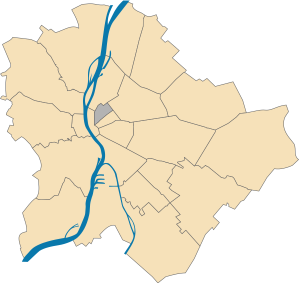Discovering Terézváros: Budapest’s Historical Gem
Terézváros, also known as Budapest’s VI. district, is a captivating blend of history, culture, and urban charm. Nestled in the heart of Budapest, this district offers a unique blend of historical landmarks, educational institutions, and cultural attractions. This guide provides an in-depth look into the wonders of Terézváros and why it should be on every tourist’s itinerary.
Introduction
Terézváros, traditionally known as the second smallest district in Budapest, is named after Maria Theresa, the only female ruler of the Habsburg dominions. The district has undergone significant transformations over the centuries, evolving from agricultural lands to a bustling urban center.
Location

Terézváros is one of Budapest’s central districts. It is bordered by Budapest’s XIII., XIV., VII., and V. districts. Major roads such as Dózsa György út, Városligeti fasor, Király utca, and Deák Ferenc tér define its boundaries.
Geography
The district’s terrain is primarily river sediment, consisting of sand, gravel, and clay. Historically, this area was the floodplain of the Danube river and the Rákos stream. The average altitude of Terézváros is about 103-104 meters above sea level.

Landmarks
Terézváros boasts several iconic landmarks:
- Liszt Ferenc Zeneművészeti Egyetem: A renowned music academy with a beautifully restored facade.
- Andrássy Avenue: A grand boulevard that is also a UNESCO World Heritage site. It is home to the Hungarian State Opera House, which has been a cultural hub since its opening in 1884.
- Hősök tere (Heroes’ Square): A significant square dedicated to the Hungarian national leaders and the Millennium Monument, officially inaugurated in 1929.
Demographics
As of January 1, 2022, Terézváros had a population of 37,586 residents. Historically, the district has seen fluctuations in its population. By the time of the city’s unification in 1873, Terézváros was Budapest’s most populous district with 73,760 inhabitants.
Education
In the early 19th century, Terézváros emphasized education, with three primary schools established to ensure even the poorest could receive basic education in writing, arithmetic, and the Hungarian language.
Museums
Terézváros is home to several museums:
- Szépművészeti Múzeum (Museum of Fine Arts): Constructed between 1900 and 1906, this museum houses a vast collection of international art.
- Műcsarnok (Hall of Art): Designed by architect Schickedanz Albert, this art venue was ready for the Millennium celebrations.
Twin Towns
Terézváros has several twin towns, including Lenti, Kézdivásárhely, Temerin, and Zára.
Conclusion
Terézváros, with its rich history, cultural landmarks, and urban charm, is a must-visit for anyone touring Budapest. Whether you’re a history buff, an art enthusiast, or just a curious traveler, Terézváros promises an unforgettable experience.